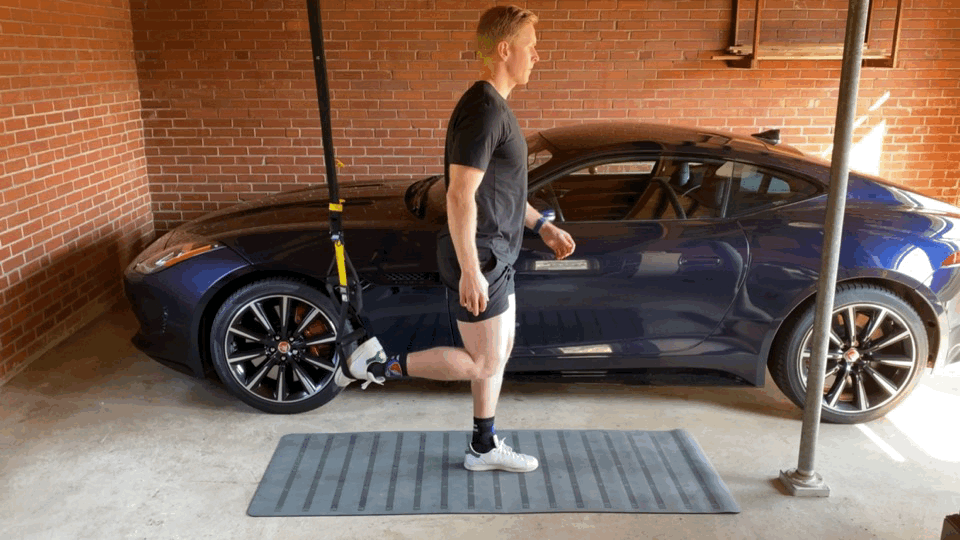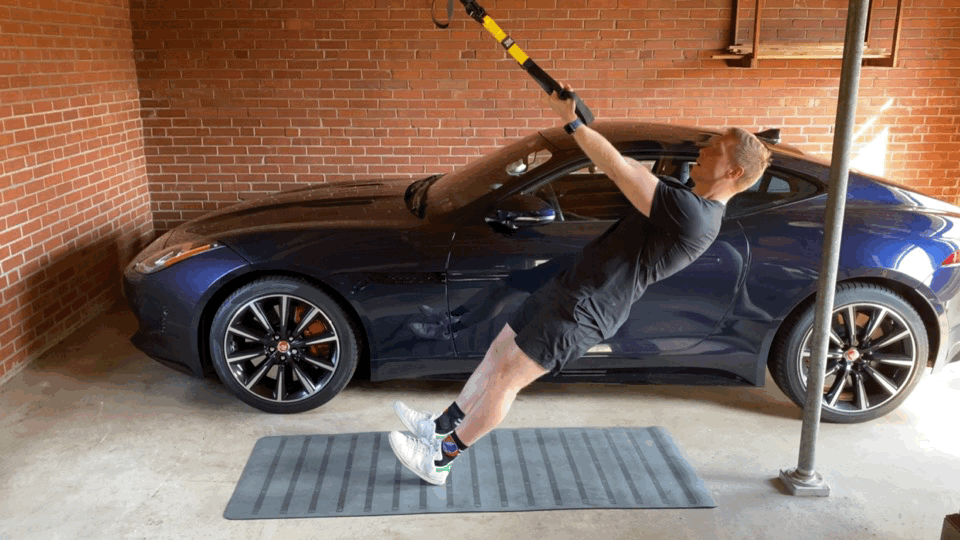TRX Training at Home
/For over a decade, the TRX Suspension Trainer has been my go-to tool for both home and travel workouts. Its versatility, ease of setup, and compact storage make it a game-changer for anyone looking to maintain fitness without bulky equipment. Whether you’re a swimmer, triathlete, or fitness enthusiast, TRX offers scalable, full-body workouts that challenge your strength, balance, and mobility—all with just a pair of training bands and a little creativity.
How to Use TRX for Progressive Overload and Adaptation
TRX training’s unique approach uses your body weight and gravity to create resistance. This makes it an excellent tool for progressive overload, a key principle in building strength and endurance. By adjusting the straps' length, your body’s angle, or your base of support, you can easily modify the intensity of any exercise. These adjustments not only challenge your muscles but also improve coordination and core stability.
For swimmers and triathletes, this adaptability is especially valuable. TRX exercises can mimic swimming movements, enhance shoulder stability, and strengthen the posterior chain crucial for improving performance and preventing injuries.
Build Strength with TRX Training Program
Check out some of the progressive programming examples below, and see why TRX is a must-have home training accessory. Click here to get a TRX for home, set up a coaching call to discuss programming, or get the full program delivered in app from our marketplace!
Warm Up Patterns
A proper warm-up is essential to activate dormant muscles and mobilize restricted ranges of motion. With TRX, you can prepare your body efficiently for the main workout. Here are a few warm-up drills to get started:
Deep Squat with Overhead Reach: A perfect TRX lat stretch to open up your shoulders and spine while activating your hips.
Deep Squat with Overhead Reach/Lat Stretch
Supported Cross-Under Lunge: A dynamic movement that improves hip mobility and challenges balance.
Supported Cross-under lunge
Pec Stretch with Alternating Step: Loosen tight chest muscles while engaging your core and legs.
Pec Stretch with alternating step
Building Lower Body Strength
The majority of sports movements happen on one leg, making single-leg training critical. TRX offers numerous exercises to build lower body strength and stability:
Rear Foot Elevated Split Squats: Ideal for developing unilateral strength while improving balance and coordination.
Rear Foot Elevated Split Squats - stability progression
TRX Glute Bridge Leg Curl: A fantastic combination of hamstring activation and glute engagement for posterior chain strength.
Glute Bridge Leg Curl
Upper Body Workouts: Push, Pull, and Everything In Between
Your upper body’s strength and mobility play a vital role in overall performance. TRX provides a range of exercises to target pulling and pushing muscles effectively:
TRX Bridge Row: Strengthen your lats and improve postural stability by adjusting your body’s inclination.
Rows
TRX Bridge Inverted Row - inclination progression and load under gravity
Inverted Row - inclination progression and load under gravity
1-Arm Row: stability progression
1 Arm Row - stability progression
1-Arm Row with Rotation: Add rotational complexity to challenge your stability and core.
1 Arm Rows with rotational complexity progression
Upper Body Pushing Progressions
Horizontal pushing patterns are often more friendly on the shoulder joint, and are a great compound movement to develop the chest, shoulders and triceps simultaneously.
Push Up
Inclined Push-Up: Progressively load your chest, shoulders, and triceps while maintaining joint-friendly mechanics.
Push Up - inclination progression, loading under gravity
Core Stability: The Foundation of All Movement
Core stability isn’t just about six-pack abs; it’s about controlling and transferring force effectively. With TRX, you can target your core while simultaneously mobilizing your hips and shoulders:
Knee Tucks and Pikes: Use lever progression to increase difficulty and engage your entire core.
Knee Tucks
TRX Rollout: Strengthen your anti-extension capabilities while improving shoulder alignment.
Knee Tucks with push up complexity progression
Pikes - lever progression
Enhancing Shoulder Stability
The shoulder’s range of motion makes it prone to instability, especially for swimmers. TRX helps improve shoulder stability through controlled, functional movements:
TRX Ys: Activate your scapular stabilizers to improve posture and overhead mechanics.
TRX Ys
Serratus Anterior Rollouts: Build strength and stability with progressive lever length challenges.
Serratus Anterior Reach Outs
Serratus Anterior Reach Outs
Serratus Anterior Rollout progression with increased lever length
Sculpting Arms with TRX
Single-joint exercises are great for finishing your workout. TRX provides a fun and challenging way to target your biceps and triceps:
TRX Tricep Extension: Focus on building arm strength with controlled movements.
Triceps Extensions
TRX Bicep Curl: A unique way to target your arms without traditional weights.
Biceps Curls
Why You Need TRX in Your Training Program
The benefits of TRX training go beyond convenience. It’s a versatile tool that supports strength training, enhances mobility, and builds endurance—all while being easy to store and use. Whether you’re a beginner or a seasoned athlete, TRX helps you achieve progressive overload, improve functional movement, and stay consistent with your workouts.
Get Started with Train Daly
Ready to elevate your fitness? I’ve developed TRX training programs tailored to swimmers, triathletes, and fitness enthusiasts. My programs include detailed video demonstrations, personalized coaching, and progressive routines to help you achieve your goals.
Click here to get your TRX equipment, book a coaching call, or explore the full TRX training program available in the app. Let’s build strength, stability, and resilience together—one strap at a time.
Give these examples a try and let me know how it goes in the comments section below, connecting on social, or contacting me here. You can find a TRX here for your training, or for more programming and coaching around TRX and other in-home training solutions, here.





















